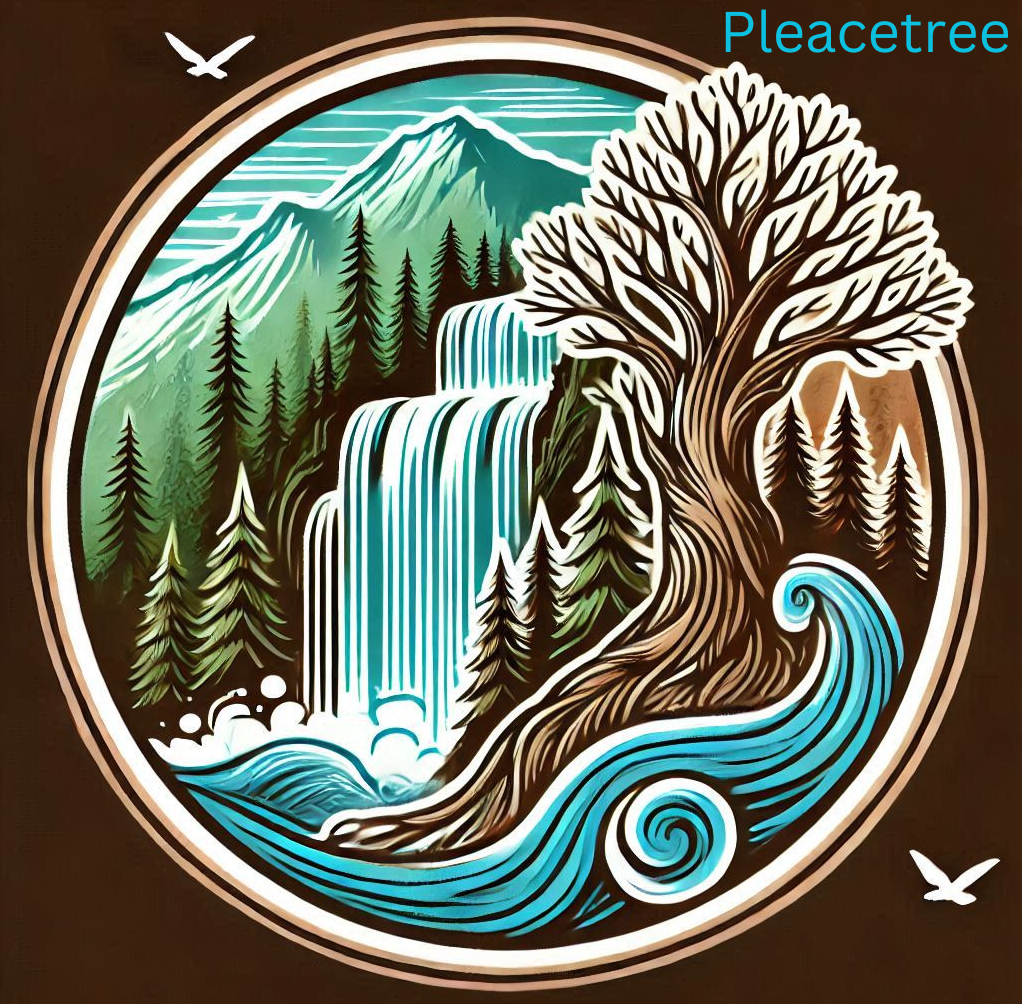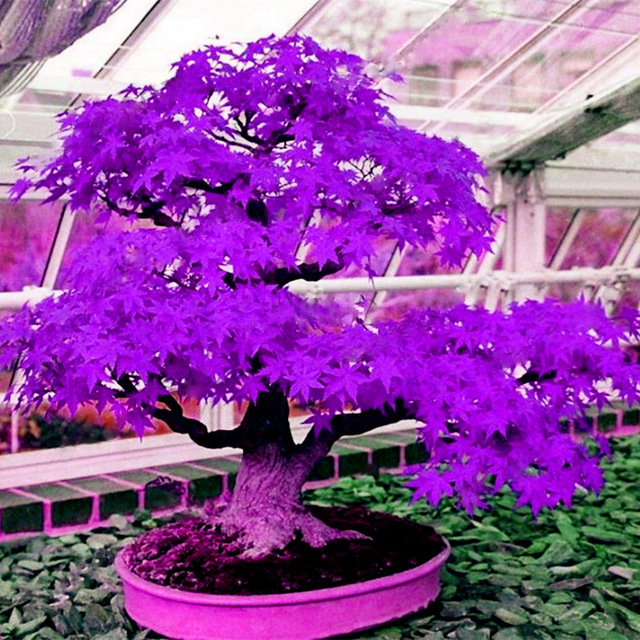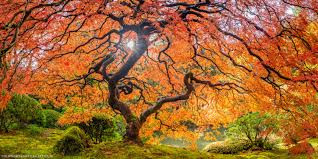
A great way to spice up the outside landscape of our home is by introducing a variety of ornamental trees. These trees are usually smaller, but have an aesthetic appeal that will make any garden or landscape more enjoyable. These trees, depending on the species, can have showy bright, eye-catching flowers in the spring. They can also have elegant picturesque bark features that stand out from a distance; or some have an aromatic fragrance that make the air around our homes aromatically pleasurable.
Types of deciduous ornamental trees
When it comes to all species of trees especially ornamental varieties their are an immense selection to choose from. One of my favorites is the Japanese maple (Acer palmatum). These trees come in many shapes and sizes from ones that grow tall and wide to ones that are weeping and hybridized and stay small. They also come in many different colors from green, red to magenta, and maroon, or some have all these colors in one tree. Japanese maples are a great climbing tree for young children too because they don’t get very big so the branches are low to the ground being easy to reach.
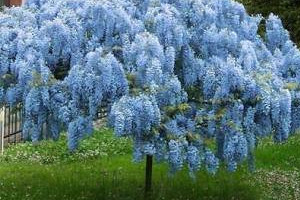
The second on my list is the Blue Wisteria tree (Wisteria sinensis) which has one of the worlds most gorgeous flower displays in the spring due to its unique purple/blue color change. This tree has very fragrant sweet smelling aromatic flowers that is captivating to have in your landscape. It is somewhat easy to grow because it is both disease resistant and drought tolerant.
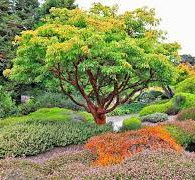
In the same family as the Japanese maple, but different genius is the Paper Bark Maple (Acer griseum) or sometimes referred to as Blood Bark Maple. It is a native tree to China but has grown popularity as an ornamental tree throughout much of the world. This is due to its small size and elegant sheets of paperish bark that peel to form a cinnamon-brownish color. The soft green leaves turn scarlet to represent the trees fall foliage color.
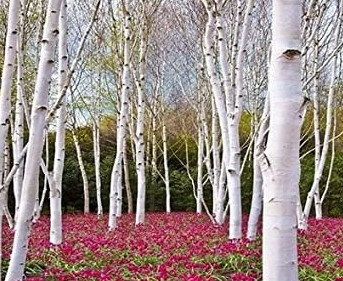
A tree that I really like due to the attractive look of its bark is the White Birch (Betula papyrifera) or often called paper birch, because the bark peels away in paper like layers. Native Americans would use these layers to start fires while also using the wood itself to build canoes. That is why some refer to it as canoe birch. The white birch tree is a native tree to the higher elevations of Northern North America.
Same genus but different species, the River Birch (Betula nigra), is another small growing tree that many people integrate into their landscape. Just like the name represents, this tree is a native species commonly found growing along the edge of a riverbank. This tree has an appealing yellowish brown bark that peels, while also growing easily in almost any condition. This tree has small ovate serrated leaves that turn yellow in the fall.
In the spring, when the snow begins to thaw, the tree that starts sprouting its buds the earliest is the Magnolia (Magnolia sp.) having 210 different flowering tree species. Magnolia is an ancient genus that is scientifically documented to have evolved before bees. The family Magnoliaceae dates back 95 million years and is known as a disjunt distribution tree. This is a group of trees that grow in different geographical locations throughout the world. This tree has large fragrant star shaped flowers that come in shades of white, pink, yellow green, and purple. They often bloom when snow is still on the ground.
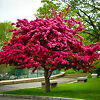
Another tree with a beautiful spring flower is the Crab Apple (Malus sp.) that has about 50 different varieties and colors. The brilliant flowers bloom for 1 to 2 weeks and are very showy in early spring with pink, white, magenta, or red flowers. They also have a very fragrant smell. The small crab apple fruit develop in the fall and stay through the winter where early spring arriving birds feed on them.
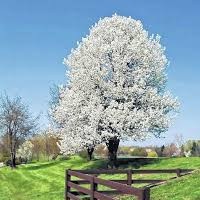
On the topic of bright showy flowers in the spring is the Bradford or Callery Pear (Pyrus calleryana) which has an impressive show of white flowers. This tree is originally from China and Vietnam but has become a popular ornamental throughout much of the worlds northern hemisphere. Many people lollipop these trees, which means to trim them giving them a rounded shape or appearance from the outside.
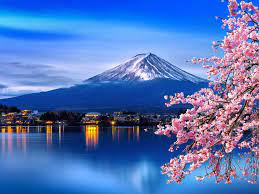
Next is the Flowering Cherry (Prunus serrulata) or often referred to as Japanese cherry and is a species native to Russia, China, Korea, and Japan. They vary from impressive vase-like shapes to alluring weeping varieties. This tree species is another ornamental tree that has extravagant flowers of either pink or white that develop in clusters in the spring, with two to five clusters forming on the nodes with five petals. These trees are known to grow throughout many temperate regions of the globe because they can be grown with minimal care. In Washington DC their is a National Cherry Blossom Festival every year.
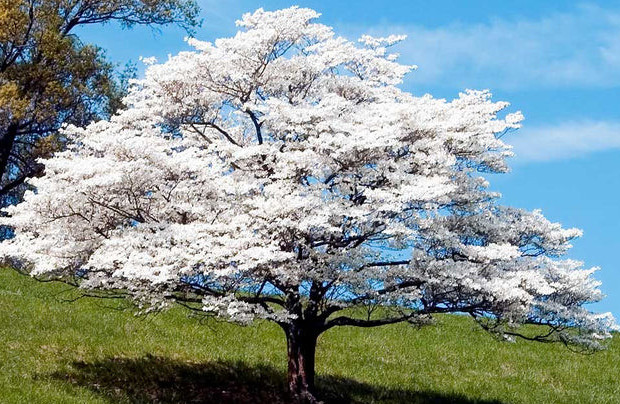
In addition, to the previous trees is the Flowering Dogwood (Cornus florida) that is most oftenly considered the most spectacular of the native flowering trees. These trees are notorious for their showy display of white and pink flowers that bloom in the early spring that last for many weeks. It most often has horizontal tiered branching, with red fruits that are enjoyed by birds, with a scarlet autumn foliage. The Native Americans would extract a red dye from the root system or use the bark and root system to treat malaria. This tree was once endemic to the eastern portion of the United States from Nothern Florida to Main east to the Mississippi river.
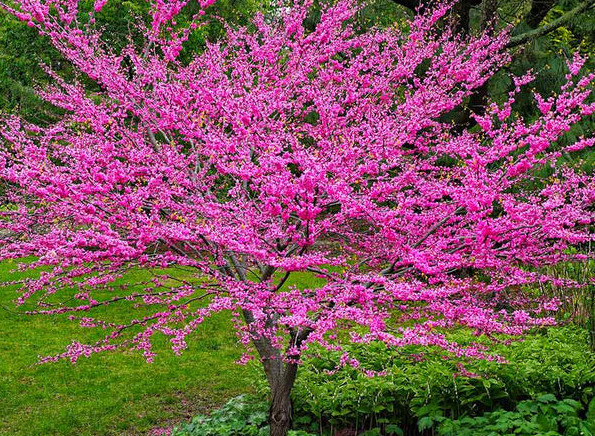
The Eastern Redbud (Cercis canadensis) is a small deciduous tree native to North America from Southern Ontario Canada west to California then south to Mexico. This tree has showy pink flowers that are quick to display in early spring. Then the leaves emerge pushing the flowers off to form heart shaped leaves for the remainder of the summer, that then turn yellow in the fall.
Evergreen ornamental trees 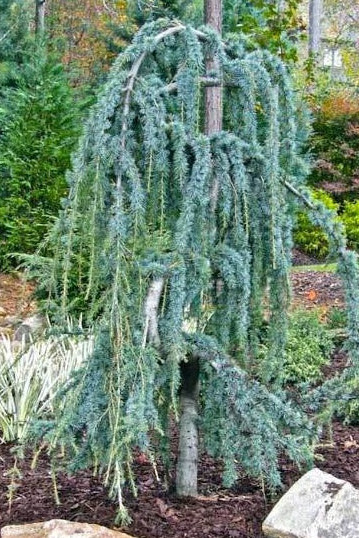
When it comes to planting ornamental trees in and around our properties that will stay green or blue all year round choose an evergreen species. My most favorite evergreen ornamental variety is the Weeping Hemlock (Tsuga canadensis Pendula) it is an attractive evergreen that has a graceful weeping form. Weeping hemlocks require well drained, slightly acidic, moist soils with partial to full sunlight to grow their best. These trees can grow to about 12 to 18 ft tall with a width or spread of 25 ft.
Aside from the weeping hemlock I really like the weeping Blue Spruce (Picea pungeons Glauca Slenderina Pendula) hybrid cultivar because of the trees brilliant silver-blue needles with a central trunk rising to about 8 to 10 feet when mature. This tree forms a curtain of cascading branches that weep down to touch the ground. This tree species should be grown in partial to full shade in slightly acid, moist soils where it is resistant to both hot and cold temperatures.
The next evergreen ornamental variety of tree that has a charming appearance is the Weeping Norway Spruce (Picea abies Pendula) it has weeping branches decorated with rich green needles flowing down to the ground. This tree, like other evergreens, likes slight acidic moist soils grown in partial to full sun that can create an appealing colorful vibrant landscape throughout the year.
A very pretty weeping evergreen is the Weeping Blue Atlas Ceder (Cedrus atlantica ‘Glauca Pendula’ Serpentine) with a phenomenal yearly blue-green color appeal with a light grey bark. This tree species grows to about 12 ft tall with a width of about 15 ft. It grows best in well drained slightly acidic moist soils with a good drought tolerance.
Conclusion
If you are the type of person who likes to landscape your property to create a beautiful paradise of color and appeal then you should incorporate ornamental tree varieties into your landscape. There are hundreds of tree species available to fit you or your families personality or visual attraction. My aim is that you enjoyed this article. If you have any questions please leave me a comment or drop me an email.
